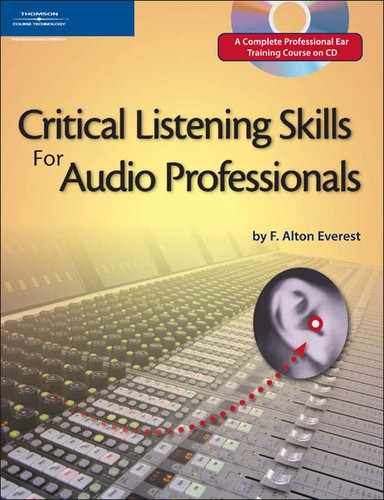Book Description
Audio productions are made or broken by the quality of the recording engineer's ears. The ability to properly discern sounds, identify subtle problems, and act accordingly to apply the necessary fix makes all the difference in the quality of the final tracks and master. The good news is that these crucial skills can be learned. The ability to instantly identify frequencies, hear hidden distortions, and instinctively reconcile conflicts in the EQ of instruments, audio elements, vocals and more are traits of those who have mastered the art of audio production. The best engineers have trained their ears to immediately recognize audio problems that the consumer and those new to recording arts would likely not hear, but that, if left unresolved, would result in an amateurish final product. For more than two decades, students of F. Alton Everest's Critical Listening and Auditory Perception courses have rapidly developed these skills by using the intense lessons found in this book and on the CD. Unfortunately the books and CDs included with the course were usually too expensive for aspiring engineers to purchase and were often available only in colleges, universities, or school libraries. Now for the first time these indispensable training sessions are available with this release of Critical Listening Skills for Audio Professionals. Through hundreds of illustrations and an accompanying disc containing high-resolution MP3 files with nearly five hours of narration of the entire course, you can acquire the audio discernment skills of a seasoned recording engineer by studying this course at your own pace, in your own home.
Table of Contents
- Copyright
- Acknowledgments
- About the Author
- Preface
- Critical Listening
- Introduction to Critical Listening
- Estimating the Frequency of Sound
- Estimation of Sound Level Changes
- Estimating Frequency Band Limitations
- Frequency Response Irregularities
- Judgment of Sound Quality
- Detecting Distortion
- Reverberation Effects
- Signal Versus Noise
- Voice Colorations
- Listening With Discernment
- Auditory Perception
- Introduction to the Structure and Function of the Human Hearing System
- Use of Loudspeakers and Headphones
- Loudness, Pitch, and Timbre
- How One Sound Masks Another
- How the Ear Analyzes Sound
- Non-Linearities in the Auditory System
- The Perception of Delayed Sounds
- Why Some Sounds Are More Pleasant Than Others
- How We Locate Sounds
- True Binaural Listening
- Glossary
- Bibliography
